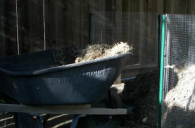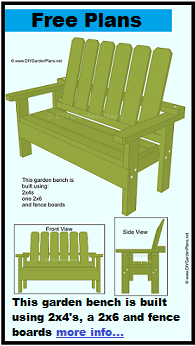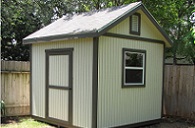How to Make Compost
Chances are, if you’re interested in learning how to make your own compost, your gardening skills and garden size may have gotten to the point where you’re sick of purchasing prepared soil. This is a very common realization that many gardeners come to eventually. Making your own compost ensures you don’t have to purchase and haul bags of dirt from the store. It also guarantees a steady supply of perfect, beautiful, healthy soil that’s ideal for growing almost all kinds of plants- if not grown directly into the compost, but as a wonderful soil additive that loosens, feeds, and helps retain moisture while draining perfectly. Making your own compost is also incredibly easy, and makes a lot of sense.
What is Composting?
Composting is simply allowing waste plant material to break itself down. This happens naturally to dead plant material- from grass to banana peels, to whole trees. Composting at home properly is the same process, only will happen faster if you do it right (which isn’t hard!). Bacteria, fungi, and all sorts of animals help the composting process and are also necessary in the home composting process. It’s true- making your own soil by letting material to break down and rot sounds like a stinky, buggy, messy process- but in reality it’s actually a very healthy and clean process without smell and without mess.
What is Compost Made Of?
You need material to start with. Material includes plant and vegetable matter that will easily break down (sometimes referred to as nitrogen materials), and dry fibrous materials (sometimes referred to as carbon items). Moist materials are the nitrogen materials, and the dry materials are the carbon materials. In order to make good, healthy compost, you need to have some of both types of materials. Nitrogen or wet materials activate and speed up the composting process, while carbon materials keep the pile airy and break down slower. You typically need more dry carbon material than you need wet nitrogen material in a healthy pile of compost.
Carbon or dry materials include:
- Sawdust
- Wood pellets
- Dried fall leaves
- Straw
- Branches and stems
- Wood
- Brown paper bags
- Egg shells
- Pine needles
Nitrogen or wet materials include
- Fresh manure from chickens, rabbits, goats, horses, ducks, cows etc.
- Food scraps (excluding any meat or bones, dairy products or similar items)
- Green fresh lawn clippings
Where Should the Compost Pile Be?
Another thing your compost needs is a proper place to be. Having your pile directly on the ground is ideal. There are ways to make compost not directly onto the ground- such as in a compost tumbler. You will need to add compost activators to keep your compost in your tumbler healthy. No matter where your compost is, it needs to be in a place that’s easily accessible in order to add materials, to work the pile, and to take from it. It may not be the prettiest spot in the garden, but having it where its easily used is very important.
Turning the Pile
And finally, your compost needs to be turned, or mixed, regularly- and kept moist. Large piles can be mixed with a pitchfork. A hand crank tumbler can do a good job mixing in a barrel. In the hot summer months, adding water as needed is essential to the pile to keep it active and breaking down.
How to Set Up and Maintain the Active Compost Pile
To set up your pile, first add your dry carbon materials first. Then, in layers, alternate wet and dry materials. Keep it moist and cover it if you want (it’ll help keep bugs down) with a tarp or cloth. Once a week or so, give your pile a turn to keep the layers moving and mixing and to keep your pile aerated. Keep adding wet and dry material as you go along, keeping to more dry material than wet ones- and keeping the pile slightly damp but not drenched. You’ll start to notice your pile looking like compost in just a couple of weeks- and when pieces become so small and unrecognizable that they all sort of look the same, the compost is ready to be use.
Things to Remember About Your Compost
Your compost pile should never smell bad. It’s normal to see steam coming from it on cool mornings or over the winter if it doesn’t freeze hard where you live. Bugs are a natural part of the composting cycle, so seeing them isn’t something to worry about. Keeping your pile covered can help keep the appearance of bugs at bay. Use your finished compost as a wonderful potting soil or as an additive in the garden.
We hope you enjoy creating and sustaining your compost!




